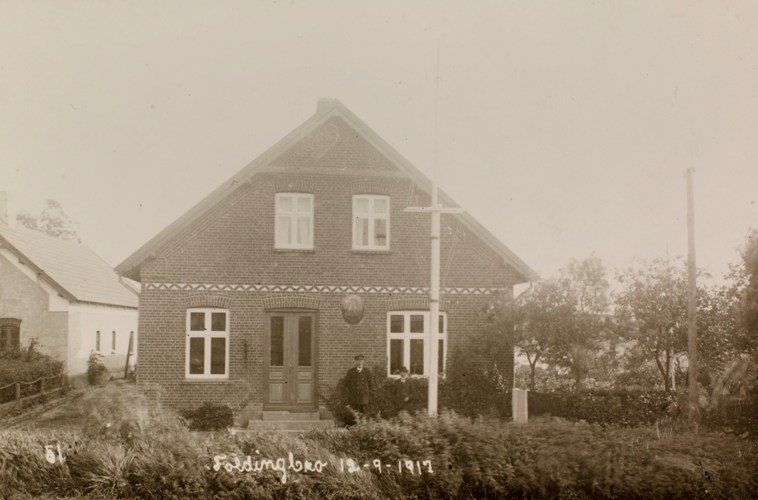Foldingbro as a border town
After the defeat in 1864, the river Kongeå first became the border to Prussia and later to Imperial Germany. The river once came again to form a customs border after there had been a duty-free period since 1851. A new customs authorities was set up to monitor the border and a number of frontier posts were erected at the crossing points. Foldingbro was created as one of the customs stations.
Danish customs control
The Customs Authorities rented space in the old publican farm from before 1851. The building that burned in 1906 was situated where Kongeå Inn is now. A customs collector inspector was employed with customs assistants and customs farmhands under him. Along with the border gendarmes, it was their job to ensure that goods were not being taken across the border without paying customs duties
Together they monitored the new border with an unprecedented thoroughness. Not least because the gendarmes in their roles as customs officers at the customs stations were allowed to keep 40% of the confiscation value of any contraband goods they seized.
To begin with, the confiscated items were auctioned off in Foldingbro and from 1866 at auctions in Kolding. However, the customs officers' diligence at Foldingbro could not prevent the Foldingbro station from being demoted in 1881 from being an independent office to becoming a customs checkpoint under the jurisdiction of Vamdrup Customs office.
After the construction of the East Jutland stretch of railway, Foldingbro's importance to border traffic diminished in favour of Vamdrup, which evolved into an important railway town with a large staff of customs officers. However, there would still be customs officers at Foldingbro for nearly another four decades. It was only at Reunification in 1920 that customs control at Foldingbro finally ceased.

Danish customs office, 1917.
Photo: Det Kongelige Danske Bibliotek
German customs control
There was also customs controls on the German side of the river until 1920. From 1871 the German customs inspectors had their customs office in a house just south of river Kongeå. The building is still there. So is the inn, which was built on the German side of the border and is now called Foldingbro Inn.
During the time Foldingbro was a border town between Denmark and Germany, the town grew and gained a large number of businesses and many craftsmen. Foldingbro's markets became a gathering place for residents living north and south of the river.
In 1893, a meeting hall was built north of the river. The building was constructed after a collection on both sides of the border, as part of the movement towards the national fight for Danish preservation in Southern Jutland.
The meeting hall was used for residents on both sides of the border for talks, concerts and other events. The German authorities were not too enthusiastic about the project. When meetings were held in the meeting hall, the German police stood outside and noted who came over the bridge from the south to take part in the event.
During WW1, the bridge was blocked so there was no way you could come over it. It was only reopened after the war. After the Reunification in 1920, the customs border was moved south.

Bridge over Kongeåen in Foldingbro, German side.
Photo: Det Kongelige Bibliotek
Author: Peter Munch Jensen, former museum curator at Sønderskov Museum

